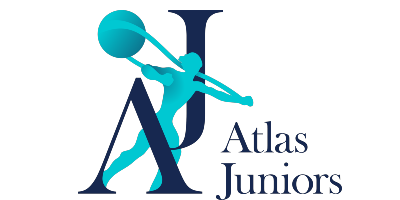Looking for:
What to do instead of r.i.c.e. method
Click here to ENTER
Low Back Pain- Bed rest with acute low back pain was shown to be less effective at improving pain and function compared to gentle movement and exercises. He or she can first help you figure out the best protection for your injury. Liz Zubek October 18, at pm Permalink. E When You Can M.
MOVE an injury not RICE – This Changed My Practice.PEACE & LOVE: Say Goodbye to RICE for Your Soft-Tissue Injury – Sport & Spinal Physiotherapy
This is where the M.E.A.T. protocol comes in. This acronym stands for movement, exercise, analgesics and treatment. This protocol is centered. Many people are familiar with the “RICE Method”, that is: rest, ice, compress, elevate. While this is all fine and dandy if you have a week. R.I.C.E. Method · Rest · Ice · Compression · Elevation.
R.I.C.E. versus M.E.T.H. | Quiet on the Set Magazine.M.E.A.T. vs R.I.C.E. | The New Age of Treating Acute Injuries
OL replaced R rest. Then in , Dr Gabe Mirkin retracted his support for his R. E protocol for soft-tissue injury! He wrote,. He surmised from scientific evidence that cooling the injured soft tissue causes vasoconstriction tightening of blood vessels. This means that healing cells cannot reach the injured tissue thereby slowing the healing response.
Not speeding it up. This lead to the authors within the British Journal of Sports Medicine reviewing recent literature. So they proceeded to come up with new acronyms for the management of soft tissue injuries:. The authors felt that previous acronyms focussed only on acute management. Thus ignoring sub-acute and chronic stages of tissue healing. Unload or restrict movement for 1—3 days to minimise bleeding, prevent distension of injured fibres and reduce the risk of aggravating the injury.
Rest should be minimised as prolonged rest can compromise tissue strength and quality. Pain signals should guide the cessation of protection. Elevate the limb higher than the heart to promote fluid flow out of tissues. Despite weak evidence supporting its use, elevation shows a low risk-to-benefit ratio. The various phases of inflammation help repair damaged soft tissues.
For shoulder injuries: pendulums, pole walking, and Nordic ski. For neck pain: rows and ellipse. For back pain: walking, swimming, and yoga. For lower limb fractures: water running and seated weights.
For upper limb fractures: walking and the recumbent bike. References and resources: Mirkin G, Hoffman M. The Sports Medicine Book. Sydney: Landstowne; Jamieson, J. Quick fix possible: Bure could set rehab record. The Province. Vancouver, BC. Rutherford K. Doctor to the star athletes. Burlington Post. Wharton J, Wharton P.
New York: Times Books; Khan K, Scott A. Why Ice Delays Recovery. Gabe Mirkin on Health, Fitness and Nutrition blog. Updated October 13, View Gary Reinl: Iced! The Illusionary Treatment Option, 2 nd edition, McCormack J. BMJ Talk Medicine. Accessed May 24, Listen Lorenzen I. Treating tendinopathy with Professor Hakan Alfredson. Accessed May 11, Sports Exerc. Sports Med. Boettger October 18, at pm Permalink. And so another dogma takes a dive.
Good advice. Encouraging direction. Liz Zubek October 18, at pm Permalink. Gaylord Wardell October 19, at am Permalink. Stefanie Falz October 19, at pm Permalink. Jennifer Robinson October 20, at am Permalink. Dr Dara Behroozi: Thank you for your comment, you do bring up excellent points.
John Tallon October 22, at pm Permalink. Sheldon Glazer October 22, at pm Permalink. Janice M November 1, at am Permalink. Terry Chang December 20, at pm Permalink. The vasoconstrictive effects of ice always perplexed me. Thought provoking commentary. Alfredo Tura December 20, at pm Permalink. Meredith Davidson December 21, at am Permalink.
Mary Lefebvre April 29, at am Permalink. George Wood January 21, at pm Permalink. Sujay Bangera December 20, at pm Permalink. Jennifer Robinson December 22, at pm Permalink.
Jennifer Robinson July 4, at am Permalink. This communication reflects the opinion of the author and does not necessarily mirror the perspective and policy of UBC CPD. Comments are moderated according to our guidelines. Visit ubccpd. Previous Next. Click here to print this article.
Read Later. Adeera Levin Dr. Alexander Chapman Dr. Alice Chang Dr. Alisa Lipson Dr. Alissa Wright Dr. Amanda Hill Dr. Amin Javer Dr. Amin Kanani Dr.
Andrew Farquhar Dr. Andrew Howard Dr. Anna Tinker Dr. Anne Antrim Dr. Antoinette van den Brekel Dr. Barb Melosky Dr. Bob Bluman Dr. Breay Paty Dr. Brian Bressler Dr. Brian Kunimoto Dr. Carol-Ann Saari Dr. Catherine Allaire Dr. Catherine Clelland Dr. Charlie Chen Dr. Chris Cheung Dr. Chris Stewart-Patterson Dr. Christina Williams Dr. Christy Sutherland Dr.
Clara van Karnebeek Dr. Colleen Dy Dr. Colleen Varcoe Dr. MEAT stands for movement, exercise, analgesics pain medication , and treatment. The MEAT method is more effective at reducing pain, chronic inflammation, and improving strength. It also ensures a more rapid return to activity and reduces the likelihood of reinjury.
This applies not only to injuries of muscles and tendons, but also to concussion injuries as well. This should generally be gentle with no weight on the injured area, slow, and not painful. Movement allows for your muscles to help cycle the inflammation, reduce sensitivity of the injured area to movement, and reduce joint stiffness caused by inflammation.
Exercise – Exercise is different from movement in that exercises should be deliberate, repetitive movements with the intention of building strength, tissue tolerance, and improving range of motion. This helps improve blood flow, stimulate strengthening of the tissue, and prevent scar tissue, which all work to allow strong, healthy tissue to repair the damaged tissue. Exercise will allow proper alignment of the healing tissue fibers.
This should be done gently at first, but as the tissues begin to heal, the duration, intensity, and level of challenge of exercises can be increased. Analgesics – Analgesics are pain relieving medications. Analgesics can be helpful to allow movement and exercise before pain starts in order to allow further strengthening, movement, and function. These should generally not be anti-inflammatory medications for reasons listed above, but many options are.
Anti-inflammatories can be used if nothing else is available, to avoid more intensive medications such as opioids, or due to medical issues with other analgesic medications. Over the counter medications you could consider include Advil, Ibuprofen, or Tylenol. Consult your doctor and pharmacist first about medication interactions and which medications are safe for you.
If you have an acute injury or chronic pain, it is important to manage this inflammatory process with a clinic that understands the many factors needed to getting you back to whatever activity you love Do you have a question about chiropractic care, fitness or nutrition?
We would love to hear from you, and we might even turn your question into our next blog post! Ask a Question. Select Category Uncategorized. Subscribe to blog. Unsubscribe from blog. Sign In. Remember me. Forget Username Reset Password. Subscribe to this blog post Unsubscribe.



